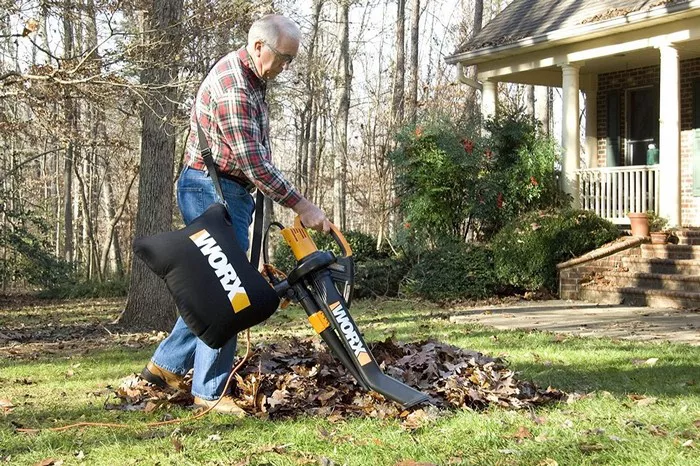A leaf sweeper is an essential tool for maintaining a tidy yard or garden, especially during the fall season when leaves shed abundantly. This guide will delve into the intricacies of how a leaf sweeper functions, its components, and tips for optimal usage.
Introduction to Leaf Sweepers
Leaf sweepers are mechanical devices designed to efficiently gather leaves, twigs, and other debris from outdoor surfaces such as lawns, driveways, and sidewalks. They come in various designs, from manual push models to motorized versions, offering flexibility and convenience to users with different needs and preferences.
Components of a Leaf Sweeper
1. Brushes or Tines: The primary component of a leaf sweeper is its sweeping mechanism, typically composed of rotating brushes or tines. These brushes or tines are responsible for collecting leaves and debris as the sweeper moves over the surface.
2. Collection Bag or Hopper: Most leaf sweepers feature a collection bag or hopper where the gathered debris is deposited. This bag may be detachable for easy emptying or integrated into the sweeper’s design for continuous operation.
3. Frame and Wheels: A sturdy frame provides structural support to the leaf sweeper, while wheels facilitate smooth movement across different surfaces. The frame also houses the sweeping mechanism and may include adjustable settings for controlling the height and angle of the brushes or tines.
4. Handle or Hitch: Manual leaf sweepers typically come with a handle for pushing or pulling the device, allowing users to maneuver it with ease. In contrast, motorized sweepers may feature a hitch for attachment to a lawn tractor or utility vehicle, enabling effortless towing.
How Does a Leaf Sweeper Work?
1. Manual Operation: In manual leaf sweepers, the user pushes or pulls the device across the desired area, causing the brushes or tines to rotate and collect debris in the path. As the sweeper moves forward, the collected leaves are deposited into the collection bag or hopper for later disposal.
2. Motorized Operation: Motorized leaf sweepers rely on an engine or motor to power the sweeping mechanism, eliminating the need for manual effort. The user operates the sweeper by driving it over the surface using a lawn tractor or similar vehicle. As the sweeper moves, the rotating brushes or tines effectively gather leaves and debris, depositing them into the collection bag or hopper.
Tips for Using a Leaf Sweeper Effectively
1. Adjust Height Settings: Depending on the surface and the type of debris being collected, it’s essential to adjust the height settings of the leaf sweeper accordingly. Lower settings work best for dense or wet leaves, while higher settings are suitable for light debris or uneven terrain.
2. Regular Maintenance: To ensure optimal performance and longevity, it’s crucial to perform regular maintenance on your leaf sweeper. This includes cleaning the brushes or tines, inspecting for any damage or wear, and lubricating moving parts as needed.
3. Choose the Right Time: Timing is key when using a leaf sweeper, especially during the fall season when leaves are abundant. Aim to sweep your yard or garden on dry days to prevent wet leaves from clogging the sweeper and to achieve better results overall.
4. Overlap Passes: When sweeping larger areas, overlap each pass slightly to ensure thorough coverage and effective debris collection. This technique helps prevent missed spots and ensures a clean finish.
Conclusion
leaf sweepers offer a practical solution for maintaining a clean and tidy outdoor environment, especially during seasons when leaves and debris are abundant. Whether manual or motorized, these devices efficiently gather leaves, twigs, and other detritus, making yard maintenance a more manageable task. Understanding the components and operation of a leaf sweeper is essential for maximizing its effectiveness and longevity.
By following the tips outlined in this guide, such as adjusting height settings, performing regular maintenance, and choosing the right time for sweeping, users can achieve optimal results with their leaf sweeper. Additionally, addressing common questions and concerns regarding the use of leaf sweepers helps users make informed decisions and ensures a positive experience.
Incorporating a leaf sweeper into your yard maintenance routine can save time and effort while enhancing the overall appearance of your outdoor space. Whether you’re clearing leaves from a small lawn or tackling larger areas, a leaf sweeper is a valuable tool that streamlines the process and helps you achieve a clean and pristine landscape.
FAQs
Q1: Can a leaf sweeper handle wet leaves?
A1: While leaf sweepers are primarily designed for collecting dry leaves and debris, many models can handle wet leaves to some extent. However, wet leaves may be more challenging to collect efficiently and may require more frequent emptying of the collection bag or hopper. It’s advisable to use the leaf sweeper on dry days whenever possible for optimal performance.
Q2: How often should I empty the collection bag or hopper?
A2: The frequency of emptying the collection bag or hopper depends on various factors, including the size of the area being swept, the density of the debris, and the capacity of the sweeper. As a general guideline, check the collection bag or hopper regularly during use and empty it when it reaches around two-thirds full. This prevents overloading, ensures continuous operation, and maintains efficiency.
Q3: Can I use a leaf sweeper on uneven terrain?
A3: Yes, many leaf sweepers are designed to handle uneven terrain effectively. However, it’s essential to adjust the height settings of the sweeper accordingly to accommodate bumps, dips, and other irregularities in the surface. Additionally, exercise caution when operating the sweeper on steep inclines or rough terrain to prevent tipping or damage to the equipment.

